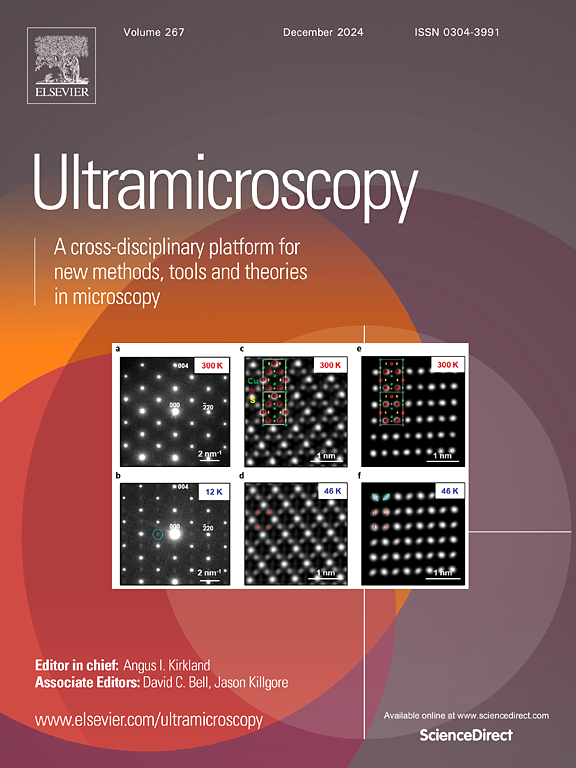An improved soft-thresholding exit wave reconstruction for imaging beam-sensitive materials
IF 2
3区 工程技术
Q2 MICROSCOPY
引用次数: 0
Abstract
High-resolution transmission electron microscopy (HRTEM) is a widely-used technique for atomic-scale characterization. However, the conventional dose of HRTEM can destroy beam-sensitive materials such as organic-inorganic halide perovskites. CH3NH3PbI3 (MAPbI3), a typical perovskite, will be easily damaged after irradiated with the dose of ∼102 e-/Å2. Low-dose imaging techniques can protect the specimen but it is difficult to achieve an image which is both directly interpreted and atomically clear. Exit wave reconstruction (EWR), as one of phase retrieval methods, can recover an interpretable phase image at the atomic scale but its signal-to-noise ratio (SNR) is limited by low electron doses. Here, we improve the iterative wave function reconstruction (IWFR) method and present a soft-thresholding L1-IWFR. Results from both simulated and experimental focal-series dataset at the extremely low dose show that L1-IWFR improves the SNR effectively and has better performance on low-dose datasets than IWFR. Combined with low-dose imaging techniques and various alignment strategies, an atomically clear image of CH3NH3PbI3 (MAPbI3) is successfully achieved at the total dose of ∼45 e-/Å2.
一种用于光束敏感材料成像的改进软阈值出口波重建方法
高分辨率透射电子显微镜(HRTEM)是一种广泛应用于原子尺度表征的技术。然而,常规剂量的HRTEM会破坏光束敏感材料,如有机-无机卤化物钙钛矿。CH3NH3PbI3 (MAPbI3)是一种典型的钙钛矿,在~ 102 e-/Å2的剂量下辐照后很容易被破坏。低剂量成像技术可以保护标本,但很难获得既直接解释又原子清晰的图像。出口波重建(EWR)作为相位恢复方法之一,可以在原子尺度上恢复可解释的相位图像,但其信噪比受电子剂量低的限制。本文改进了迭代波函数重建(IWFR)方法,提出了一种软阈值L1-IWFR方法。在极低剂量下的模拟和实验结果表明,L1-IWFR有效地提高了信噪比,并且在低剂量数据集上的性能优于IWFR。结合低剂量成像技术和各种对准策略,CH3NH3PbI3 (MAPbI3)在总剂量为~ 45 e-/Å2下成功获得了原子清晰的图像。
本文章由计算机程序翻译,如有差异,请以英文原文为准。
求助全文
约1分钟内获得全文
求助全文
来源期刊

Ultramicroscopy
工程技术-显微镜技术
CiteScore
4.60
自引率
13.60%
发文量
117
审稿时长
5.3 months
期刊介绍:
Ultramicroscopy is an established journal that provides a forum for the publication of original research papers, invited reviews and rapid communications. The scope of Ultramicroscopy is to describe advances in instrumentation, methods and theory related to all modes of microscopical imaging, diffraction and spectroscopy in the life and physical sciences.
 求助内容:
求助内容: 应助结果提醒方式:
应助结果提醒方式:


